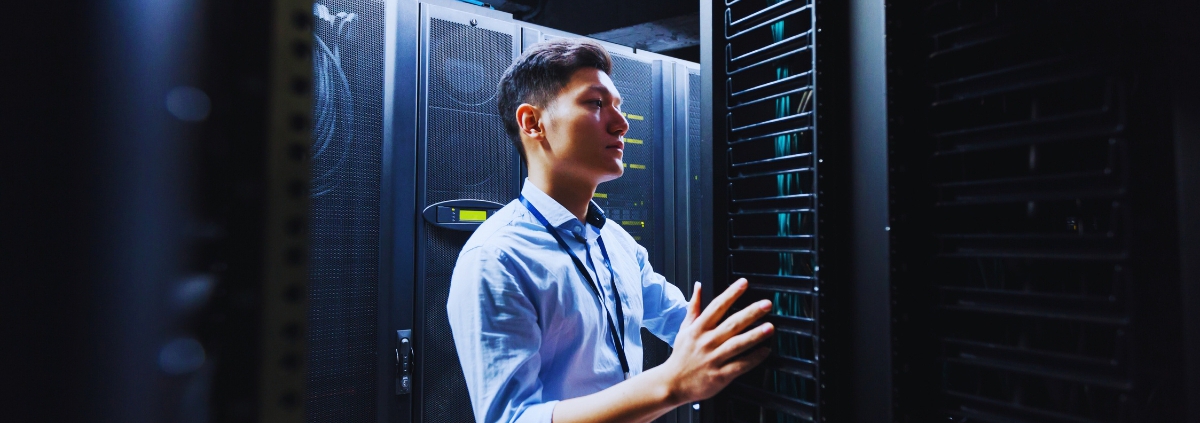AI Data Center Power: Why UPS Systems Are the Backbone of Next-Generation Compute Infrastructure
Introduction: The New Era of AI-Driven Power Demands
Artificial intelligence is reshaping the data center landscape faster than any prior technological shift. The exponential growth of GPU clusters, high-density racks, and continuous 24/7 workloads has pushed power infrastructure to its limits. Traditional power architectures—once designed for balanced CPU loads—now struggle to sustain the intensity and unpredictability of AI workloads.
At the heart of this transformation lies a single question: how can operators ensure reliable, efficient, and scalable AI data center power?
- Understanding AI Data Center Power Requirements
AI workloads differ from conventional computing in three critical ways:
- High Power Density: Training large language models or running inference pipelines requires thousands of GPUs, often exceeding 50–100 kW per rack.
- Rapid Power Fluctuations: Unlike predictable enterprise loads, AI clusters exhibit rapid load spikes that strain power delivery systems.
- Thermal and Redundancy Complexity: Power inefficiency translates directly into heat, making both power and cooling systems critical to stability.
To sustain these dynamic conditions, data centers must adopt next-generation UPS and battery systems designed for continuous, high-current operations.
- The Role of UPS and Battery Backup in AI Data Center Power Architecture
An uninterruptible power supply (UPS) is more than an emergency backup—it’s the first line of defense against voltage instability and momentary outages.
In AI data centers, the UPS must handle not only sudden outages but also microsecond-level voltage dips that can reset GPUs or corrupt training processes.
Modern lithium-based UPS systems provide:
- High discharge efficiency (up to 95%) for fast response times.
- Modular scalability to support growing AI rack clusters.
- Smaller footprint and longer lifecycle compared to lead-acid systems.
To understand how UPS systems form the backbone of modern data center design, you can read our in-depth guide:
👉 Designing Reliable Power Systems for Data Centers: The Critical Role of UPS Solutions.
For enterprises upgrading existing facilities or building AI-ready campuses, advanced UPS battery systems like those from Leoch Lithium offer a strong foundation for reliable AI data center power.
- Integration of UPS, BESS, and Renewable Energy for AI Workloads
AI clusters consume power in bursts, often in sync with model training cycles or peak inference demand. Pairing UPS systems with Battery Energy Storage Systems (BESS) and renewable generation creates a multi-layered resilience structure:
- UPS for millisecond-level protection against grid fluctuations.
- BESS for long-duration backup during sustained grid instability or peak pricing hours.
- Renewables (solar/wind) to reduce carbon footprint and grid dependency.
This hybrid approach not only safeguards uptime but also improves Power Usage Effectiveness (PUE)—a key metric for AI data center sustainability.
For a deeper look at how layered backup architectures combine UPS, BESS, and renewables, explore:
👉 Data Center Backup Power: Building Multi-Layer Resilience with UPS, BESS, and Renewable Integration.
- Designing for Power Scalability and Redundancy
AI compute clusters can double in scale within months. A forward-looking power strategy must include:
- Modular UPS configurations that grow with rack expansion.
- N+1 or 2N redundancy to maintain resilience during component failures.
- Smart monitoring systems for real-time load balancing and predictive maintenance.
Advanced lithium UPS solutions enable faster deployment cycles, better energy density, and integration with DC power systems commonly used in AI-focused rack layouts.
- Preparing for the Future of AI Power Infrastructure
By 2030, global AI workloads are projected to consume over 10% of total data center energy. This rapid growth underscores the urgency for more intelligent, efficient power systems.
Investing in advanced UPS technology is no longer optional—it’s the backbone of sustainable AI data center power strategy.
With AI clusters demanding both performance and reliability, choosing the right UPS partner becomes a strategic decision. Systems like Leoch Lithium’s UPS Series combine high energy density, rapid response, and long-term durability, ensuring that data centers stay operational even under extreme conditions.
Conclusion: Powering the AI Revolution
AI data centers represent the frontier of digital infrastructure—and power is their lifeblood. From voltage regulation to multi-layered backup systems, every component must be optimized for speed, stability, and sustainability.
Whether you’re upgrading an existing facility or designing an AI-ready data campus from scratch, focusing on the UPS backbone is the key to ensuring continuous performance and operational resilience.


